In the world of compact hatchbacks, the Ford Focus and the Hyundai i30 are two stalwart contenders that have carved a niche for themselves with a blend of performance, technology, and practicality. Both cars have undergone extensive updates in recent years, making this comparison not just a study of aesthetics, but also a deep dive into specifications, innovations, and overall driving experience.
Ford Focus vs Hyundai i30 – Differences & prices compared
Compare performance, boot capacity, efficiency and price at a glance.
Find out which car is the better choice for you – Ford Focus or Hyundai i30?
Design and Dimensions
The Ford Focus presents a sporty demeanor with aggressive lines and a bold stance. Measuring approximately 4,392 mm in length, 1,825 mm in width, and standing 1,440 mm tall, the Focus utilizes its dimensions to provide a roomy interior and generous trunk space of 392 liters.
On the other hand, the Hyundai i30 boasts a more understated and sophisticated design. At 4,340 mm long, 1,795 mm wide and 1,455 mm tall, it remains compact and agile while still offering an impressive trunk capacity of 395 liters. This makes both cars practical for everyday use, with slight advantages in different areas.
Engine Specifications and Performance
Under the hood, the Ford Focus offers multiple engine options, including petrol MHEV, diesel, and regular petrol engines, with power output ranging from 115 to a robust 280 hp. The diesel variant can achieve remarkable fuel consumption figures of around 4.9 L/100km, making it an excellent choice for those who prioritize efficiency.
In contrast, the Hyundai i30 has a more limited engine lineup, featuring both petrol and petrol MHEV engines with power outputs up to 140 hp. Its fuel consumption averages around 5.7 L/100km, modestly trailing behind the Focus in efficiency. However, the i30 does excel in predictably smooth acceleration with a time of 9.6 seconds from 0-100 km/h, demonstrating solid performance against the Focus variants, some of which reach the same mark in as little as 5.7 seconds.
Transmission and Driving Dynamics
Both the Focus and i30 offer a choice between manual and automatic transmissions. The Ford Focus has a diverse selection, including a dual-clutch automatic transmission and traditional manual gearbox options, delivering an engaging drive experience. Its front-wheel-drive layout ensures a spirited handling characteristic.
The Hyundai i30 also features manual and dual-clutch automatic options but doesn't vary as much in its transmission details. The driving dynamics of the i30 are commendable, providing a comfortable ride while retaining agility in urban environments.
Technology and Innovations
Ford has equipped the Focus with a host of technological innovations, including advanced driver assistance systems and an intuitive infotainment setup featuring the latest Ford SYNC technology, which offers seamless smartphone integration and built-in navigation. Its safety ratings are equally impressive, giving drivers peace of mind on the road.
The Hyundai i30 matches Ford in technological readiness, boasting features like adaptive cruise control, lane-keeping assistance, and a modern infotainment system with connectivity options that cater to tech-savvy users. Its user-friendly interface often earns praise from critics and drivers alike.
Conclusion: Choosing Between Focus and i30
Ultimately, choosing between the Ford Focus and the Hyundai i30 boils down to personal preference and priorities. The Focus provides a thrilling driving experience with a range of powerful engines and innovative technology, making it an excellent choice for enthusiasts. Meanwhile, the i30 stands out with a balanced approach, delivering solid performance and everyday usability wrapped in a stylish package.
Both cars are outstanding representatives of their segments, ensuring that whether you gravitate towards Ford or Hyundai, you will be pleased with the offerings at hand. With the ongoing innovations in both models, the competition will only get fiercer, promising exciting advancements in future iterations.
Here’s where it gets real: The technical differences in detail
Costs and Efficiency:
Price and efficiency are key factors when choosing a car – and this is often where the real differences emerge.
Hyundai i30 has a to a small extent advantage in terms of price – it starts at 24000 £, while the Ford Focus costs 27500 £. That’s a price difference of around 3523 £.
Fuel consumption also shows a difference: Ford Focus manages with 4.90 L and is therefore slightly more efficient than the Hyundai i30 with 5.70 L. The difference is about 0.80 L per 100 km.
Engine and Performance:
Power, torque and acceleration are the classic benchmarks for car enthusiasts – and here, some clear differences start to show.
When it comes to engine power, the Ford Focus has a decisively edge – offering 280 HP compared to 140 HP. That’s roughly 140 HP more horsepower.
In acceleration from 0 to 100 km/h, the Ford Focus is significantly quicker – completing the sprint in 5.70 s, while the Hyundai i30 takes 9.60 s. That’s about 3.90 s faster.
In terms of top speed, the Ford Focus performs evident better – reaching 250 km/h, while the Hyundai i30 tops out at 197 km/h. The difference is around 53 km/h.
There’s also a difference in torque: Ford Focus pulls clearly perceptible stronger with 420 Nm compared to 253 Nm. That’s about 167 Nm difference.
Space and Everyday Use:
Whether family car or daily driver – which one offers more room, flexibility and comfort?
Both vehicles offer seating for 5 people.
In curb weight, Hyundai i30 is barely noticeable lighter – 1291 kg compared to 1330 kg. The difference is around 39 kg.
In terms of boot space, the Hyundai i30 offers slight more room – 395 L compared to 392 L. That’s a difference of about 3 L.
In maximum load capacity, the Ford Focus performs slight better – up to 1354 L, which is about 53 L more than the Hyundai i30.
When it comes to payload, Ford Focus hardly perceptible takes the win – 560 kg compared to 509 kg. That’s a difference of about 51 kg.
Who wins the race?
The Ford Focus proves to be leaves the rival little chance and therefore becomes our DriveDuel Champion!
Ford Focus is the better all-rounder in this comparison.

Ford Focus
Ford Focus
The Ford Focus is celebrated for its agile handling and stylish design, making it a popular choice among hatchback enthusiasts. Its well-crafted interior offers a comfortable driving experience with intuitive technology features. Whether navigating city streets or cruising on the motorway, the Ford Focus delivers a balanced drive with impressive efficiency.
details @ focus.fordpresskits.com
@ focus.fordpresskits.com
 @ focus.fordpresskits.com
@ focus.fordpresskits.com
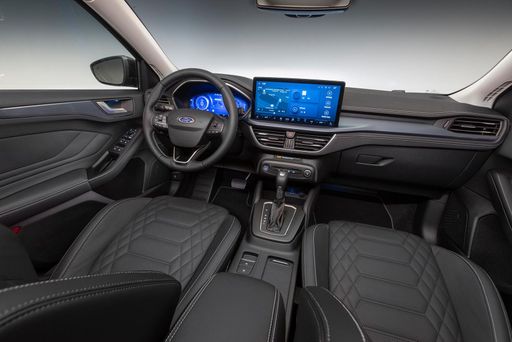 @ focus.fordpresskits.com
@ focus.fordpresskits.com
Hyundai i30
The Hyundai i30 stands out in the hatchback segment with its sleek design and modern features. It offers a comfortable ride with a well-crafted interior that caters to both driver and passengers. With its emphasis on safety and technology, the i30 provides a balanced driving experience suitable for urban and suburban environments.
details @ hyundai.news
@ hyundai.news
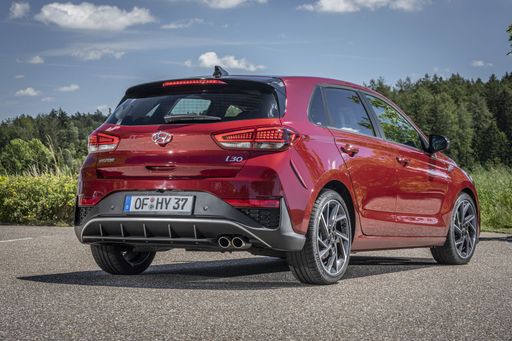 @ hyundai.news
@ hyundai.news
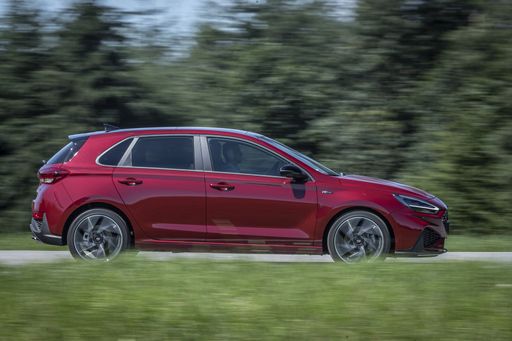 @ hyundai.news
@ hyundai.news
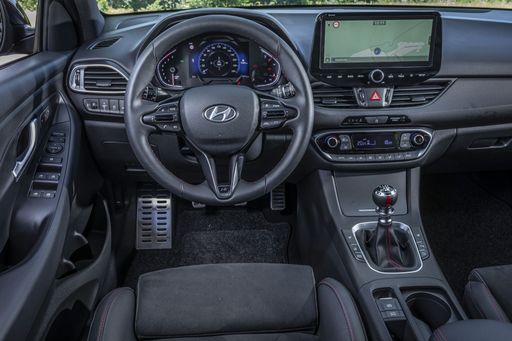 @ hyundai.news
@ hyundai.news
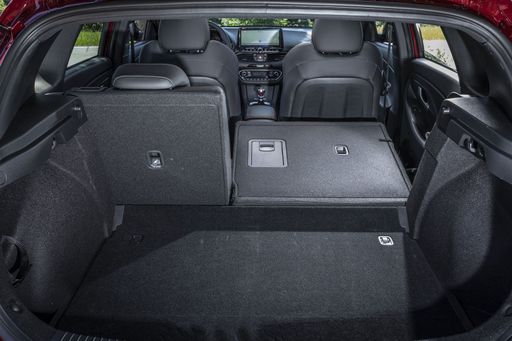 @ hyundai.news
@ hyundai.news

|

|
|
|
|
Costs and Consumption |
|
|---|---|
|
Price
27500 - 42700 £
|
Price
24000 - 29300 £
|
|
Consumption L/100km
4.9 - 8 L
|
Consumption L/100km
5.7 - 6 L
|
|
Consumption kWh/100km
-
|
Consumption kWh/100km
-
|
|
Electric Range
-
|
Electric Range
-
|
|
Battery Capacity
-
|
Battery Capacity
-
|
|
co2
117 - 183 g/km
|
co2
130 - 136 g/km
|
|
Fuel tank capacity
52 L
|
Fuel tank capacity
50 L
|
Dimensions and Body |
|
|---|---|
|
Body Type
Hatchback
|
Body Type
Hatchback
|
|
Seats
5
|
Seats
5
|
|
Doors
5
|
Doors
5
|
|
Curb weight
1330 - 1529 kg
|
Curb weight
1291 - 1407 kg
|
|
Trunk capacity
392 L
|
Trunk capacity
395 L
|
|
Length
4382 - 4397 mm
|
Length
4340 mm
|
|
Width
1825 - 1844 mm
|
Width
1795 mm
|
|
Height
1438 - 1482 mm
|
Height
1455 mm
|
|
Max trunk capacity
1354 L
|
Max trunk capacity
1301 L
|
|
Payload
495 - 560 kg
|
Payload
463 - 509 kg
|
Engine and Performance |
|
|---|---|
|
Engine Type
Petrol MHEV, Diesel, Petrol
|
Engine Type
Petrol, Petrol MHEV
|
|
Transmission
Manuel, Automatic
|
Transmission
Manuel, Automatic
|
|
Transmission Detail
Manual Gearbox, Dual-Clutch Automatic, Automatic Gearbox
|
Transmission Detail
Manual Gearbox, Dual-Clutch Automatic
|
|
Drive Type
Front-Wheel Drive
|
Drive Type
Front-Wheel Drive
|
|
Power HP
115 - 280 HP
|
Power HP
100 - 140 HP
|
|
Acceleration 0-100km/h
5.7 - 11.8 s
|
Acceleration 0-100km/h
9.6 - 13.1 s
|
|
Max Speed
186 - 250 km/h
|
Max Speed
178 - 197 km/h
|
|
Torque
170 - 420 Nm
|
Torque
172 - 253 Nm
|
|
Number of Cylinders
3 - 4
|
Number of Cylinders
3 - 4
|
|
Power kW
85 - 206 kW
|
Power kW
74 - 103 kW
|
|
Engine capacity
999 - 2261 cm3
|
Engine capacity
998 - 1482 cm3
|
General |
|
|---|---|
|
Model Year
2022 - 2024
|
Model Year
2024
|
|
CO2 Efficiency Class
D, G
|
CO2 Efficiency Class
D, E
|
|
Brand
Ford
|
Brand
Hyundai
|
What drive types are available for the Ford Focus?
Available configurations include Front-Wheel Drive.
The prices and data displayed are estimates based on German list prices and may vary by country. This information is not legally binding.
